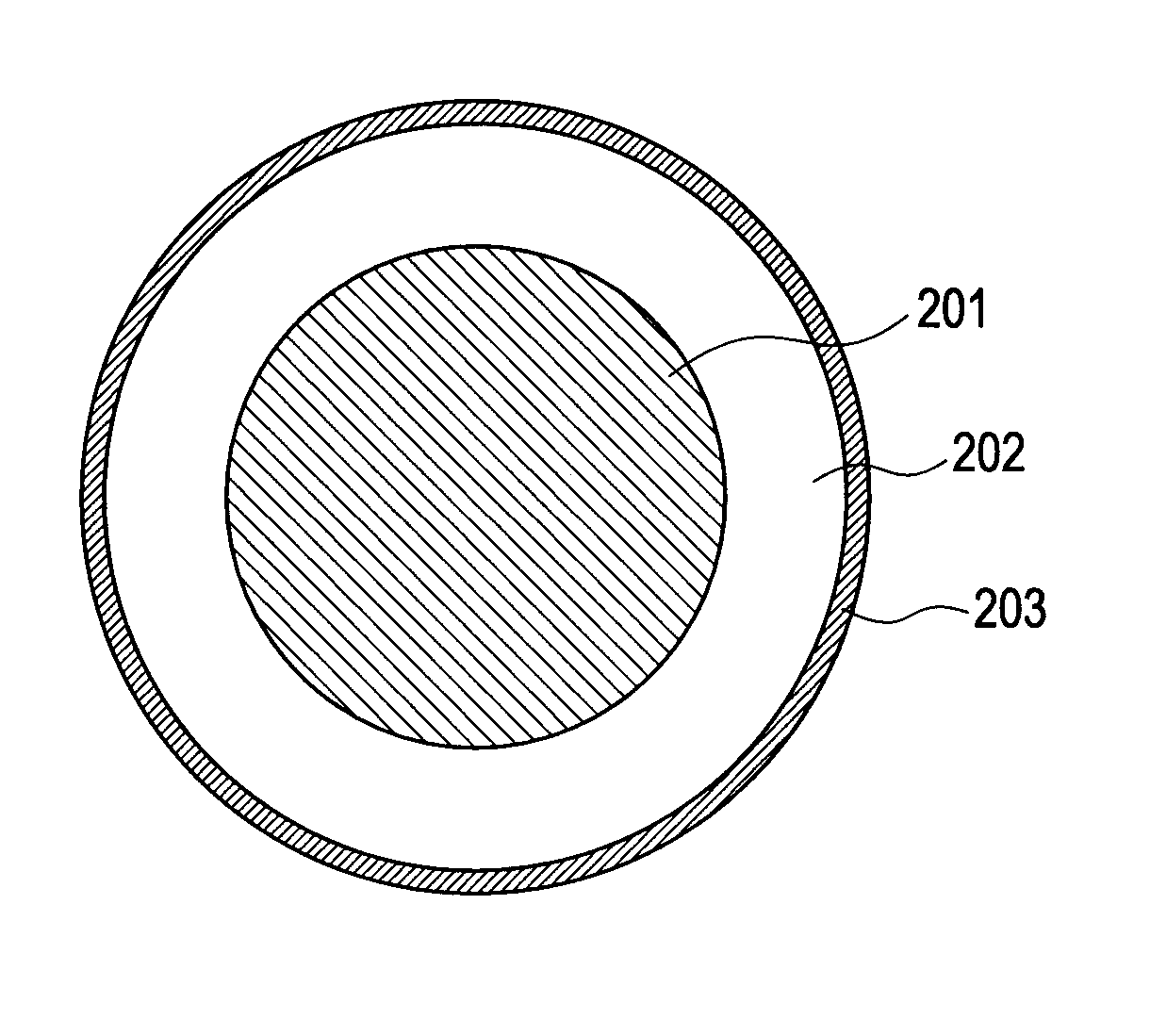Electroconductive member, process cartridge and electrophotographic image forming apparatus
a technology of electrophotographic image and electrophotographic layer, which is applied in the direction of electrographic process, instruments, corona discharge, etc., can solve the problems of ion conductive agent bleedout to the surface and the conductivity of the conductive elastic layer given by the ion conductive agent is not good, so as to reduce the increase of the electric resistance value of the charging member, reduce the image quality, and increase the electric resistance value
- Summary
- Abstract
- Description
- Claims
- Application Information
AI Technical Summary
Benefits of technology
Problems solved by technology
Method used
Image
Examples
synthesis example 1
[0070]An aqueous solution was prepared by adding sodium hydroxide to 500 g of ion exchange water and adjusting the pH to 10. To the aqueous solution, 14 g of 1,2-bis(triethoxysilyl)ethene and 2 g of tetraethoxysilane were added. The mixed solution was stirred at 40° C. for 2 hours, the solution after stirring was kept at 97° C. and left for 24 hours. Then, a precipitate was recovered by filtration, and washed by methanol. After washing, the obtained product was dried by the air, and dried at room temperature in vacuum to obtain Polymer 1.
synthesis examples 2 to 7
[0071]A polymer was obtained in the same manner as in Synthesis Example 1 except that the kinds of Compound 1 and Compound 2 as raw materials and the amounts thereof to be used were changed as shown in Table 1.
[0072]1 g of each polymer obtained and 6 g of benzocyclobutene were placed into an autoclave, mixed, and reacted at 210° C. for 30 hours. The reaction product was washed for 6 hours while it was refluxed with 150 ml of chloroform. Washing was performed again in the same manner, and the reaction product after washing was recovered. The recovered product was dried at 80° C. for 6 hours to obtain Polymers 2 to 7.
synthesis examples 8 to 10
[0073]Polymers 8 to 10 were obtained in the same manner as in Synthesis Example 1 except that the kinds of Compound 1 and Compound 2 as raw materials and the amounts thereof to be used were changed as shown in Table 1.
TABLE 1Raw material for polymerSynthesisCompound 1Compound 2Post treatmentExampleNameAmountNameAmount—11,2-Bis(triethoxysilyl)ethene14Tetraethoxysilane2Benzocyclobutene21,2-Bis(triethoxysilyl)ethene16——Benzocyclobutene31,2-Bis(triethoxysilyl)ethene14Tetraethoxysilane2Benzocyclobutene41,2-Bis(triethoxysilyl)ethene11Tetraethoxysilane7Benzocyclobutene51,2-Bis(triethoxytitanyl)ethene16Tetraethoxytitanium3Benzocyclobutene61,2-Bis(triethoxyzirconyl)ethene13Tetraethoxyzirconium2Benzocyclobutene71,2-Bis(triethoxyhafnyl)ethene15Tetraethoxyhafnium2Benzocyclobutene81,4-Bis(triethoxysilyl)benzene16Tetraethoxysilane2—91,4-Bis(trimethoxysilylmethyl)benzene14Tetraethoxysilane2—101,4-Bis(trimethoxysilylethyl)benzene15Tetraethoxysilane2—
PUM
| Property | Measurement | Unit |
|---|---|---|
| Fraction | aaaaa | aaaaa |
| Electrical resistance | aaaaa | aaaaa |
| Electrical resistance | aaaaa | aaaaa |
Abstract
Description
Claims
Application Information
 Login to View More
Login to View More - R&D
- Intellectual Property
- Life Sciences
- Materials
- Tech Scout
- Unparalleled Data Quality
- Higher Quality Content
- 60% Fewer Hallucinations
Browse by: Latest US Patents, China's latest patents, Technical Efficacy Thesaurus, Application Domain, Technology Topic, Popular Technical Reports.
© 2025 PatSnap. All rights reserved.Legal|Privacy policy|Modern Slavery Act Transparency Statement|Sitemap|About US| Contact US: help@patsnap.com



